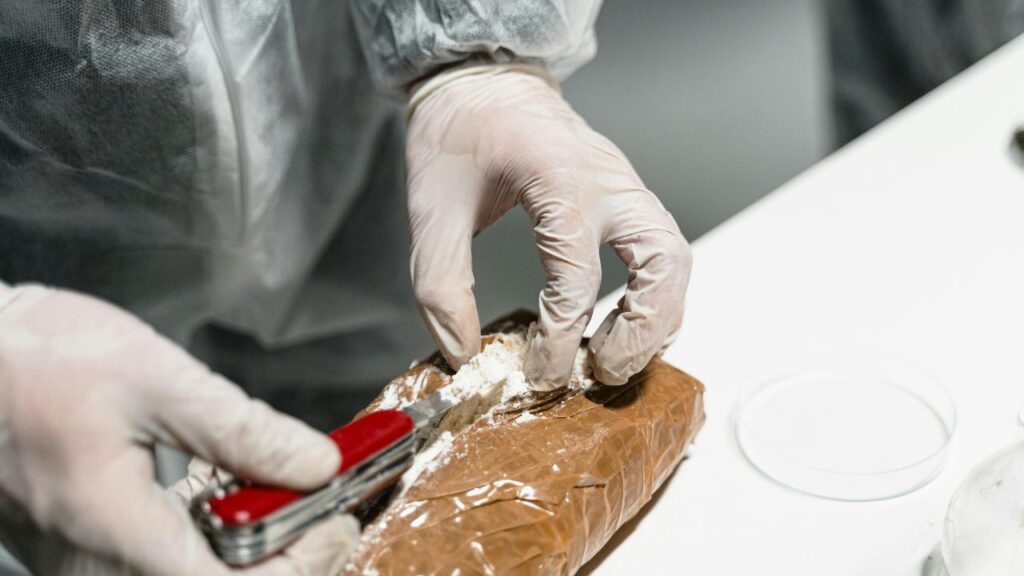The term “kilo of cocaine” carries significant weight for both law enforcement and addiction recovery. This metric not only represents a quantifiable measure used by authorities to assess and intercept illegal drug trafficking but also symbolizes the profound impact of cocaine addiction on individuals and communities. At The Bluffs Addiction Campuses in Ohio, we delve into the multifaceted aspects of cocaine addiction, emphasizing the crucial intersection of law enforcement’s efforts to combat drug trafficking and our mission to provide transformative recovery support.
The Economic and Social Price of a Kilo of Cocaine
Cocaine, a powerful stimulant drug, continues to pose a significant challenge for law enforcement agencies across the United States. A kilogram (kilo) of cocaine, equivalent to 2.2 pounds, serves as a standard unit for quantifying large-scale drug transactions. The street value of a kilo of cocaine can vary widely based on geographical location, purity, and availability, often reaching tens of thousands of dollars. However, the true cost of cocaine extends far beyond its market price, encompassing devastating social, health, and economic repercussions for individuals and communities ensnared in the cycle of addiction.

What Causes the Price of Cocaine to Change?
The price of cocaine fluctuates due to a complex interplay of factors that influence both its supply and demand. Understanding these factors is essential to grasping the dynamics of the illicit drug market. Here are some key reasons behind the fluctuating prices of cocaine:
- Supply Chain Disruptions: Cocaine’s supply chain is susceptible to disruptions at multiple points, from production and refinement to distribution. Natural events like droughts or floods can affect coca crop yields in producing countries, such as Colombia, Bolivia, and Peru. Likewise, law enforcement crackdowns on drug cartels and trafficking networks can interrupt supply routes, reducing the availability of cocaine on the street and driving up prices.
- Law Enforcement and Interdiction Efforts: Increased efforts by international and local law enforcement agencies to intercept cocaine shipments and dismantle trafficking organizations can significantly impact the supply of cocaine. Successful drug busts and the seizure of large quantities of cocaine can temporarily reduce the drug’s availability on the market, leading to price increases.
- Political and Economic Stability in Producing Countries: The political and economic conditions in cocaine-producing countries can also affect supply. Political instability, labor strikes, or changes in drug policy can disrupt production and trafficking routes, influencing the drug’s availability and price.
- Changes in Demand: The demand for cocaine can fluctuate based on various social, economic, and cultural factors. Increases in demand, perhaps due to rising popularity in certain demographics or geographic areas, can drive prices up. Conversely, a decrease in demand, possibly due to increased awareness of the drug’s dangers or the popularity of alternative substances, can lead to lower prices.
- Purity and Competition: The purity of cocaine can vary significantly, and higher purity generally commands higher prices. Additionally, competition from other drugs, including synthetic opioids and methamphetamines, can impact cocaine’s market price. Traffickers might adjust cocaine prices to stay competitive or to reflect changes in the drug’s purity.
- Innovation and Adaptation by Traffickers: Traffickers continuously adapt to law enforcement strategies, finding new routes and methods to smuggle cocaine. Innovations that reduce trafficking costs or risks can temporarily lower prices, while strategies that incur higher costs may lead to price increases.
- Exchange Rates and Global Markets: The global nature of the cocaine trade means that exchange rates and international economic conditions can influence prices. Strong fluctuations in currency values can affect the buying power of traffickers and consumers alike, impacting the price of cocaine in various markets.
- Consumer Base and Market Saturation: The characteristics of the consumer base, including their income levels and willingness to pay, can affect cocaine prices. In areas with a high concentration of affluent users, prices might be higher. Conversely, in saturated or highly competitive markets, prices might decrease to attract consumers.
Law Enforcement’s Role in Quantifying and Seizing Cocaine
Law enforcement agencies, from local police departments to federal entities like the Drug Enforcement Administration (DEA), employ meticulous strategies to intercept cocaine trafficking operations. These efforts include undercover operations, surveillance, intelligence gathering, and cooperation with international counterparts. The seizure of kilos of cocaine not only disrupts the supply chain but also provides valuable insights into the operations of drug trafficking organizations. Additionally, law enforcement agencies analyze seized cocaine for purity and origin, aiding in the broader fight against global drug trafficking networks.
Why is Cocaine Measured in Kilos?
The measurement of cocaine in kilograms (kilos) is deeply entrenched in the global drug trade, serving as a universal standard that reflects both the scale of trafficking operations and the legal framework designed to combat them. This standardization has critical implications for law enforcement, legal proceedings, and the broader understanding of the drug trade’s scope and impact.
A Universal Metric for Global Trade
Cocaine is measured in kilos for several key reasons. Firstly, the kilogram is a base unit of mass in the International System of Units (SI), making it a universally recognized and understood measurement. This global standardization facilitates the international trade of cocaine, allowing traffickers, law enforcement agencies, and legal systems across different countries to communicate and operate using a common metric.
Quantifying for Legal and Enforcement Purposes
The use of kilos as a measurement unit is also pivotal in the legal classification and penalization of drug trafficking offenses. Laws and regulations often specify thresholds in kilogram amounts to categorize the severity of trafficking crimes, with higher quantities typically resulting in more severe penalties. This quantification enables authorities to prioritize resources and responses based on the scale of the trafficking operation, focusing efforts on dismantling networks with the largest impact on public health and safety.
Economic and Strategic Considerations
Economically, the kilo serves as a practical unit for pricing and trading cocaine in the illicit drug market. The wholesale and street values of cocaine are commonly calculated per kilo, providing a clear basis for transactions and financial planning within trafficking organizations. Strategically, measuring cocaine in kilos allows for more efficient packaging, transport, and distribution. The kilo packs can be easily concealed and transported, making them the preferred unit for large-scale drug trafficking operations.
The Health Risks of Cocaine Use and the Dangers of Overdose
Cocaine, a powerful and illegal stimulant, presents significant health risks to individuals who use it, including the danger of overdose, which can be fatal. Understanding these risks is crucial for both users and those involved in addiction support and recovery services.
Immediate and Long-Term Health Risks
Cocaine use can lead to a wide range of immediate health risks, including increased heart rate, elevated blood pressure, and heightened body temperature. These effects can precipitate cardiovascular issues such as heart attacks and strokes, even in young individuals without preexisting heart conditions. Additionally, cocaine use can cause respiratory issues, neurological effects including seizures, and gastrointestinal complications.
Long-term cocaine use exacerbates the risk of developing chronic health conditions. Regular users may experience cardiovascular damage, respiratory distress, and neurological impairments. Cocaine’s impact on the brain can lead to mental health issues such as anxiety, paranoia, and hallucinations. The drug can also be highly addictive, leading to substance use disorder, which further compounds the user’s health risks and impacts their social and occupational functioning.
Risks Associated with Routes of Administration
The method by which cocaine is consumed can introduce additional risks. Snorting cocaine can damage the nasal septum and lead to chronic nasal problems. Smoking crack cocaine, a freebase form of cocaine, can cause severe lung damage. Intravenous use increases the risk of contracting infections such as HIV and hepatitis C through shared needles.
The Danger of Cocaine Overdose
Cocaine overdose is a particularly severe risk, which can occur from ingesting a large amount of the drug in a short period or from increased sensitivity to cocaine after prolonged use. Symptoms of a cocaine overdose include extreme anxiety, chest pain, tremors, and hyperthermia. Severe overdoses can lead to arrhythmias, heart attack, stroke, and death.
The risk of overdose is heightened when cocaine is used in combination with other substances, such as alcohol or opioids. This combination can mask the effects of each drug, leading users to consume higher amounts than they can tolerate, significantly increasing the risk of overdose and death.

Prevention and Recovery
Preventing cocaine use and supporting individuals in recovery are critical components of addressing the health risks associated with cocaine. Education on the dangers of cocaine use and overdose can deter initiation and encourage users to seek help. Access to addiction recovery services, including detoxification, therapy, and support groups, is essential for individuals struggling with cocaine use disorder.
The Bluffs Addiction Campuses’ Comprehensive Approach to Cocaine Addiction Recovery
At The Bluffs Addiction Campuses, we understand the complexities of cocaine addiction. Our approach to recovery is rooted in evidence-based treatments, including individual and group therapy, cognitive-behavioral therapy (CBT), and medication-assisted treatment (MAT) where appropriate. We recognize that each individual’s journey to recovery is unique, and we tailor our programs to meet the specific needs of those we serve.
Our dedicated team of professionals offers compassionate care in a supportive environment, empowering individuals to overcome addiction and rebuild their lives. We also emphasize the importance of aftercare planning and community support systems to ensure long-term recovery and prevent relapse.
Seek Help Today
If you or someone you love is struggling with cocaine addiction, The Bluffs Addiction Campuses is here to help. Our comprehensive treatment programs are designed to address the physical, emotional, and social aspects of addiction, providing the tools and support necessary for lasting recovery. Do not let addiction define your life. Reach out to us today at 330-919-9228 for a confidential consultation and take the first step towards a healthier, drug-free future.
In closing, while law enforcement plays a critical role in mitigating the supply of cocaine, the journey to recovery for those affected by addiction requires compassionate, comprehensive support. At The Bluffs, we are committed to providing that support, guided by the belief that recovery is possible for everyone. Together, we can break the cycle of addiction and pave the way for a brighter, healthier future.








